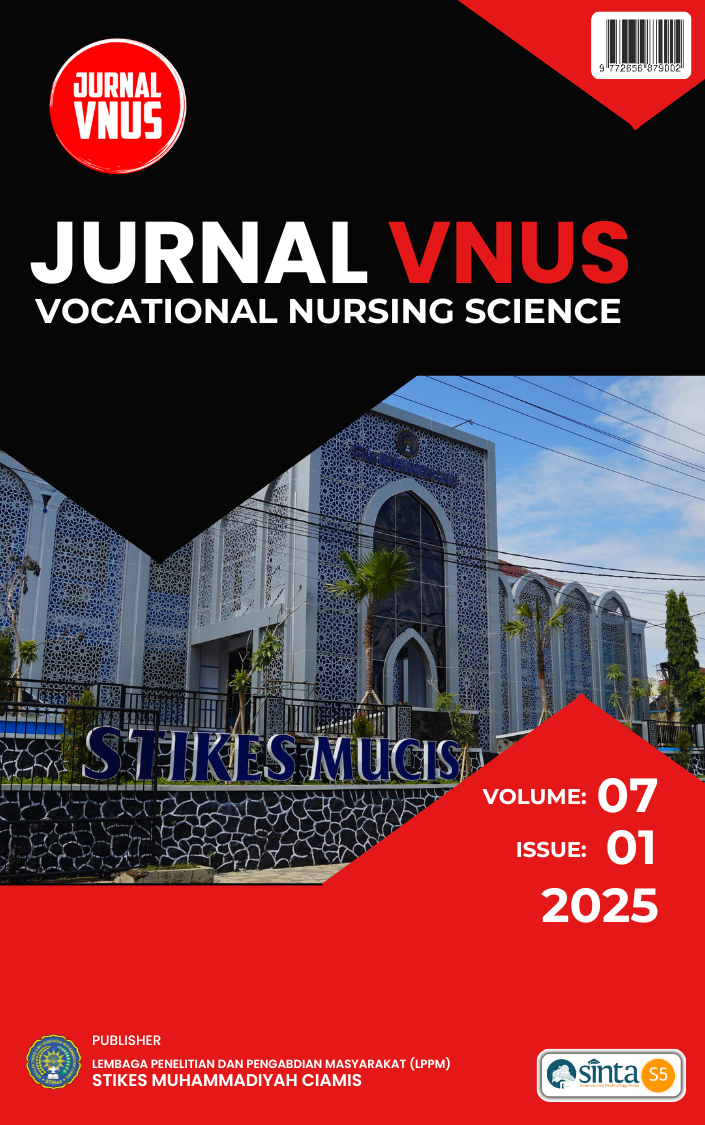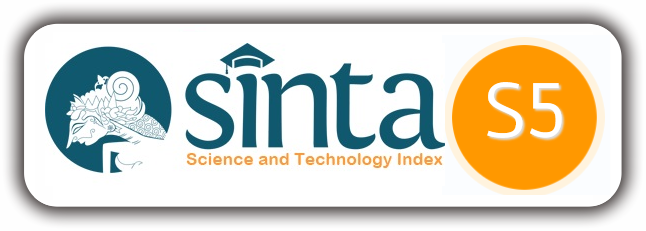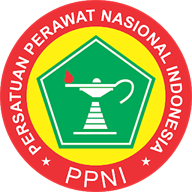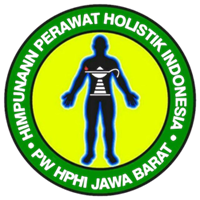Breastfeeding Self-Efficacy at 24 Hours Postpartum with Inadequate Milk Production: A Case Report
DOI:
https://doi.org/10.52221/jvnus.v7i1.808Keywords:
Breast milk, Breastfeeding Self-efficacy, PostpartumAbstract
Exclusive breastfeeding during the first six months is critical for neonatal health and development. Despite government initiatives, the exclusive breastfeeding rate in Indonesia remains below the national target of 80% as set by the Ministry of Health. One of the significant psychological determinants of successful breastfeeding is maternal self-efficacy, or the mother’s belief in her ability to breastfeed successfully. This study aimed to explore the breastfeeding self-efficacy of a postpartum mother during the first 24 hours following delivery. This case report employed a descriptive design using a nursing care approach. The Breastfeeding Self-Efficacy Scale–Short Form (BSES-SF), consisting of 14 items rated on a 5-point Likert scale, was used to measure the mother's level of breastfeeding self-efficacy. The assessment was conducted twice: at 2 hours postpartum and again at 24 hours postpartum. The study was carried out in May 2025 at the Bougenville Room of Tidar Hospital, Magelang City. At 2 hours postpartum, the mother demonstrated a high breastfeeding self-efficacy score of 55, indicating strong confidence. However, by 24 hours postpartum, her score had decreased to 49, a moderate level, coinciding with her report of inadequate milk production. This change suggests that early lactation difficulties can negatively influence a mother’s self-confidence in breastfeeding. Inadequate breast milk production during the first 24 hours postpartum can reduce maternal breastfeeding self-efficacy. It is essential for nurses to provide education and emotional support in the early postpartum period to help mothers build confidence and improve breastfeeding outcomes.
Downloads
References
Asih, Y., & Nurlaila, N. (2022). Breastfeeding Self-Efficcacy pada Ibu Hamil Trimester III Hingga Menyusui. Jurnal Kesehatan, 13(3). https://doi.org/10.26630/jk.v13i3.3543
Astuti, R. H., Astuti, A. P., & Maharani, E. T. W. (2020). Analisis kandungan laktosa dan protein pada ASI dan susu formula di Kota Semarang. Seminar Nasional Edusainstek.
Badan Pusat Statistik. (2024). Statistik Indonesia tahun 2024 (Vol. 52).
Handayani, I., & Supliyani, E. (2022). Implementation of midwife support in improving breastfeeding self-efficacy. Jurnal Kesehatan, 1(1), 8–14.
Handayani, L., Kosnin, A. Md., Jiar, Y. K., & Solikhah. (2010). Translation and validation of breastfeeding self-efficacy scale-short form (BSES-SF) into Indonesian: A pilot study. Jurnal Kesehatan Masyarakat, 7(1). https://doi.org/10.12928/kesmas.v7i1.1023
Ilham, M., Herry, H. F. M., & Andi, E. N. J. (2024). Analisis yuridis hak kesehatan perempuan dalam perspektif hukum. INNOVATIVE: Journal of Social Science Research, 4(1), 3993–4004.
Juniar, F., Akhyar, K., & Kusuma, I. R. (2023). Faktor-faktor yang mempengaruhi ketidakberhasilan ASI eksklusif pada ibu menyusui. Jurnal Riset Kesehatan Masyarakat, 4. https://doi.org/10.14710/jrkm.2023.18
Khusniyati, E. (2025). Pengaruh breastfeeding self-efficacy terhadap kelancaran produksi ASI pada ibu nifas di PMB Teta Irayanti, Mojokerto. Jurnal Kebidanan, 5(1), 1682–1692.
Kim, S. Y., & Yi, D. Y. (2020). Components of human breast milk: From macronutrient to microbiome and microRNA. Clinical and Experimental Pediatrics, 63(8). https://doi.org/10.3345/cep.2020.00059
Kingston, D., Dennis, C., & Sword, W. (2007). Exploring breastfeeding self-efficacy. Journal of Perinatal & Neonatal Nursing, 21(3), 207–215.
Li, J. Y., Huang, Y., Liu, H. Q., Xu, J., Li, L., Redding, S. R., & Ouyang, Y. Q. (2020). The relationship of previous breastfeeding experiences and factors affecting breastfeeding rates: A follow-up study. Breastfeeding Medicine, 15(12). https://doi.org/10.1089/bfm.2020.0165
Malatuzzulfa, N. I., Meinawati, L., & Nufus, H. (2022). Upaya peningkatan produksi ASI melalui pijat Woolwich dan massage rolling pada ibu nifas 1 minggu post partum. Jurnal Kebidanan, 12(1). https://doi.org/10.35874/jib.v12i1.999
Marantika, S., Choirunissa, R., & Kundaryanti, R. (2023). Pengaruh pijat oksitosin terhadap kelancaran produksi ASI pada ibu post partum. Menara Medika, 5(2). https://doi.org/10.31869/mm.v5i2.4166
Mardjun, Z., Korompis, G., & Rompas, S. (2019). Hubungan kecemasan dengan kelancaran pengeluaran ASI pada ibu post partum selama dirawat di RSIA Kasih Ibu Manado. Jurnal Keperawatan, 7(1). https://doi.org/10.35790/jkp.v7i1.22901
Melo, L. C. de O., Bonelli, M. C. P., Lima, R. V. A., Gomes-Sponholz, F. A., & Monteiro, J. C. D. S. (2021). Anxiety and its influence on maternal breastfeeding self-efficacy. Revista Latino-Americana de Enfermagem, 29. https://doi.org/10.1590/1518-8345.5104.3485
Menteri Kesehatan RI. (2022). Peraturan Menteri Kesehatan Republik Indonesia Nomor 13 Tahun 2022 tentang Perubahan Atas Permenkes No. 21 Tahun 2020 tentang Rencana Strategis Kementerian Kesehatan 2020–2024.
Oktaviyana, C., Pratama, U., Igbal, M., Fitriya, I. R., Adha, M. N., & Nelly, Z. N. (2022). Determinan kegagalan pemberian ASI eksklusif pada ibu menyusui di wilayah Puskesmas Banda Raya, Banda Aceh. Care: Jurnal Ilmiah Ilmu Kesehatan, 10(3). https://doi.org/10.33366/jc.v10i3.3839
Pramanik, Y. R., Sumbara, & Sholihatul, R. (2020). Hubungan self-efficacy ibu menyusui dengan pemberian ASI eksklusif. Jurnal Ilmiah Kesehatan Iqra, 8(1).
Pratiwi, L. N., & Nurrohmah, A. (2023). Pengaruh pijat oksitosin menggunakan essential oil lavender terhadap produksi ASI pada ibu nifas di Desa Kemiri. Jurnal Keperawatan Suaka Insan, 8(1). https://doi.org/10.51143/jksi.v8i1.399
Prima, P. D., Dewi, K., Watiningsih, A. P., Megaputri, P. S., Dwijayanti, L. A., Jayanti, N. K., Ayu, G., & Wahyuni, D. (2020). Prediktor kegagalan pemberian ASI eksklusif di wilayah kerja Puskesmas Sawan I Kabupaten Buleleng.
Rahmadani, E., & Sutrisna, M. (2022). Hubungan breastfeeding self-efficacy ibu terhadap keberhasilan ASI eksklusif bayi di wilayah kerja Puskesmas Kandang Kota Bengkulu. Research & Learning in Nursing Science, 6(2).
Rahmawati, A., & Wahyuningati, N. (2020). Tipe eksklusifitas pemberian ASI berdasarkan paritas dan usia ibu menyusui. Jurnal Citra Keperawatan, 8(2). https://doi.org/10.31964/jck.v8i2.140
Ribeiro, M. R. C., Batista, R. F. L., Schraiber, L. B., Pinheiro, F. S., Santos, A. M. Dos, Simões, V. M. F., ... & Silva, A. A. M. Da. (2021). Recurrent violence, violence with complications, and intimate partner violence against pregnant women and breastfeeding duration. Journal of Women’s Health, 30(7). https://doi.org/10.1089/jwh.2020.8378
Sari, E. (2020). Hubungan rawat gabung dengan motivasi ibu dalam memberikan ASI di BPS Arifin Surabaya. Jurnal Kebidanan, 9(1). https://doi.org/10.47560/keb.v9i1.238
Sunarto, Ngestiningrum, A. H., & Suryani, W. F. (2022). Support tipe keluarga terhadap kegagalan cakupan ASI eksklusif. Jurnal Penelitian Kesehatan Suara Forikes, 13(2).
Timiyatun, E., & Oktavianto, E. (2021). Dukungan keluarga berkolerasi dengan breastfeeding self-efficacy pada ibu menyusui. Jurnal Keperawatan Notokusumo, 9(2), 24–35.
Ulfa, Z. D., & Setyaningsih, Y. (2020). Tingkat stres ibu menyusui dan pemberian ASI pada bulan pertama. Jurnal Litbang: Media Informasi Penelitian, Pengembangan dan IPTEK, 16(1). https://doi.org/10.33658/jl.v16i1.145
Widiarta, M. B. O., & Megaputri, P. S. (2022). Ansietas saat hamil menurunkan produksi ASI saat 24 jam persalinan. Healthcare Nursing Journal, 4(2).
Wu, S. F. V., Chen, S. C., Liu, H. Y., Lee, H. L., & Lin, Y. E. (2021). Knowledge, intention, and self-efficacy associated with breastfeeding: Impact of these factors on breastfeeding during postpartum hospital stays in Taiwanese women. International Journal of Environmental Research and Public Health, 18(9). https://doi.org/10.3390/ijerph18095009
Wulandari, P., Susilawati, & Sutrisno. (2021). Studi literatur: Faktor-faktor yang mempengaruhi breastfeeding self-efficacy. Malang Journal of Midwifery, 3(2).
Yunadi, M., Ihsan, M. H., & Abadi, E. (2022). Faktor-faktor yang berhubungan dengan pemberian MP-ASI dini di wilayah kerja Puskesmas Tiworo Kepulauan Kabupaten Muna Barat. Jurnal Gizi Ilmiah, 9(3), 7–18. https://doi.org/10.46233/jgi.v9i3.920
Downloads
Published
How to Cite
Issue
Section
License
Copyright (c) 2025 Mutiara Harul Aini Pamungkas, Yuni Astuti, Noor Wulandari

This work is licensed under a Creative Commons Attribution 4.0 International License.















